If your hummingbirds don’t like new feeders, here’s why – and how to fix it.

Do your hummingbird ignore all your new feeders? Maybe you threw away that old feeder and got them a new one. But those little buggers just ignored it. It’s bad enough that they won’t share but now they don’t even give your new hummingbird feeder a fly-over. Don’t worry, this is normal behavior and easy to fix. Here’s how to switch your hummingbirds to a new feeder.
Good news! it’s perfectly normal hummingbird behavior. And it’s easy to fix.
Don’t take it personally. Also, don’t blame the new feeder. When you look at it from the hummingbirds’ perspective, it’ll make sense. Then, you can easily switch your hummingbirds to a new hummingbird feeder
Motivate them to switch
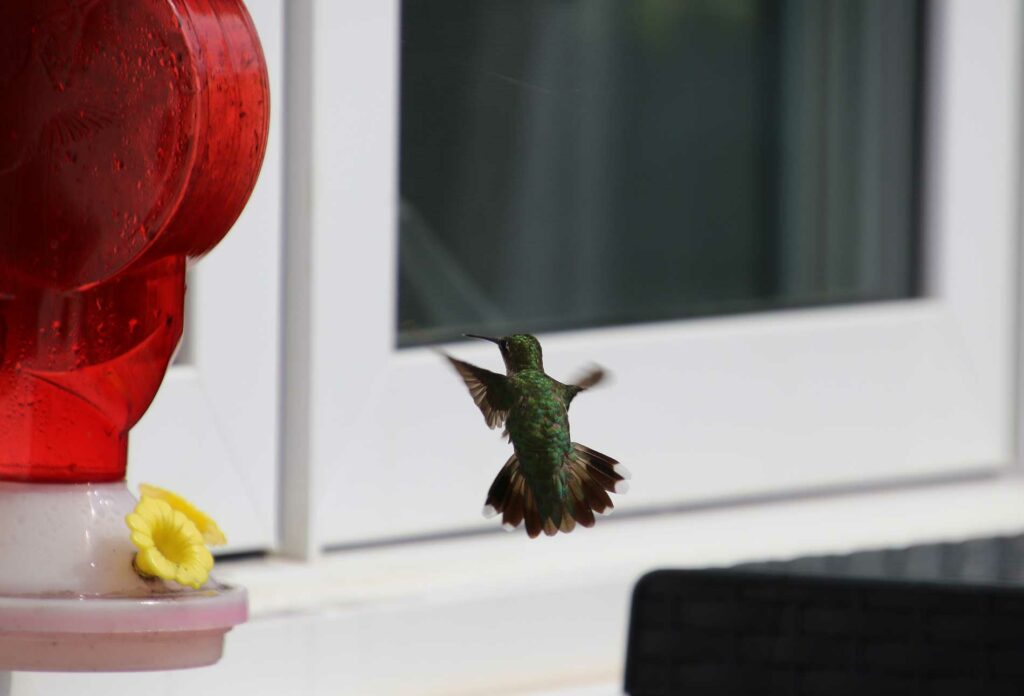
It helps to know a few interesting facts about the little sprites. You probably already know that hummingbirds need lots of calories, almost all of the time, to survive. They are always on the edge of starvation. Understandably, they’re motivated by food more than anything else.
This strong motivation makes them remember where food is. They remember perfectly the locations dependable food sources. Because they can’t afford to fly around guessing. Their amazing memories are what keeps them alive. Consequently, it makes sense that their habits aren’t easily changed.
What we know so far
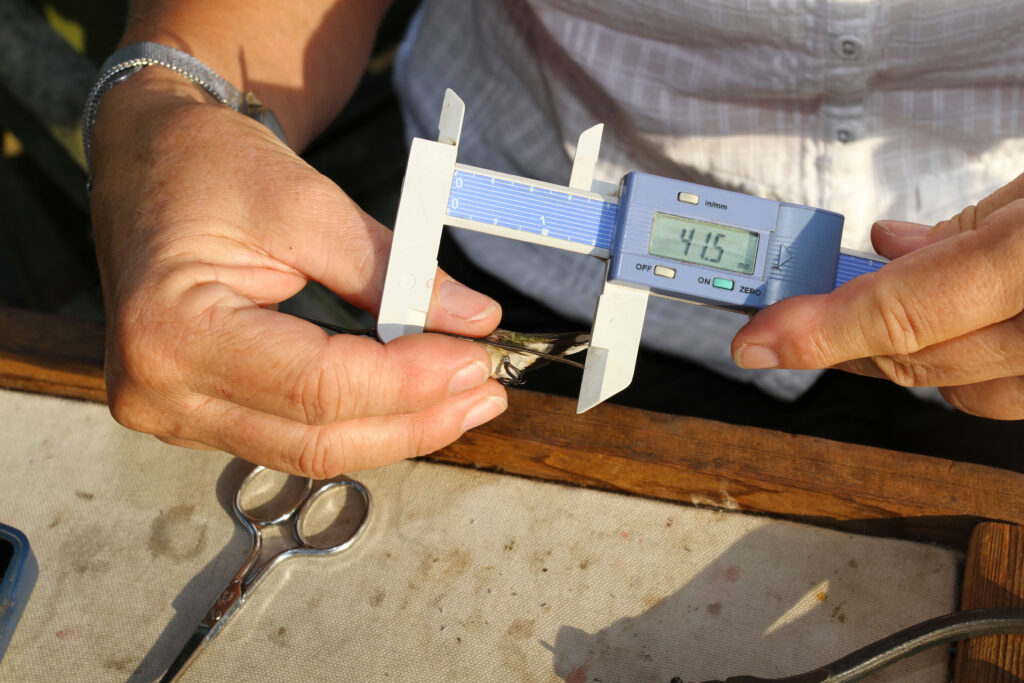
We’ve been banding hummingbirds for several decades. From this, we’ve learned that migrating hummingbirds return to the same yards, and feeders, every year. They remember your feeder and it’s exact location. This is why so many people say that their hummingbirds come to the window when they first arrive in Spring. Here’s an interesting article about hummingbird banding and how incredibly small those leg bands have to be.
It’s best for your hummingbirds to have your feeders out before they arrive. If you happen miss the moment they arrive, there will still be food waiting for them when it’s crucial.
WHY don’t your hummingbirds try new feeders?
Switching your hummingbirds to a new hummingbird feeder is a lot easier with a better understanding of their motivations. Whether they learned it from their mother or figured it out their own, your hummingbirds know that your feeder has food in it. Keep in mind that it’s possibly the only hummingbird feeder they’ve ever used. Then you put out a new feeder. Of course it’s a hummingbird feeder. Isn’t it obvious?? Nope. Not to your hummingbirds. YOU know it’s a hummingbird feeder because, for one thing, you read the tag. But your hummingbirds don’t know that it’s anything more than another yard decoration. Maybe you should have left the tag on?
So, how do you motivate your hummingbirds to try a new feeder? Motivate is the key. What motivates them? FOOD. The tried & true “Bait & Switch†technique works because it uses food – or lack of.
The secret: “Bait & Switch”
Hang your old feeder in it’s original location. BUT… make sure it’s EMPTY. Then, hang your new feeder next to it, FULL of fresh nectar. It’s important to have that old feeder there. Otherwise, your hummingbirds may not even stop at your yard because they didn’t see that old, familiar feeder. When they try that old feeder, and find it empty, they’ll predictably check around for another food source.
This works because it’s actually the way they naturally feed from flowers. Each flower only produces a little nectar each day. So, when they finish one flower, they move to the next one. When they finish with one shrub, they start whatever is next to it. When they find your old feeder empty, they’ll predictably look for something next to it.
Position your new feeder next to the old one
Textbook Bait & Switch positioning Over-achiever positioning Checking out the new feeder
The mistake most people make is leaving nectar in the old feeder. It should be empty.
Most hummingbirds will switch to a new feeder in a few minutes. Some may take a couple of hours. Sometimes it takes as long as a couple of days, but that’s really unusual. Patience is key. Don’t jump to the conclusion that they don’t ‘like’ your new feeder. They just don’t know it contains food… yet. Remember, if that old feeder has nectar in it, they’ll have no reason to look elsewhere for food.
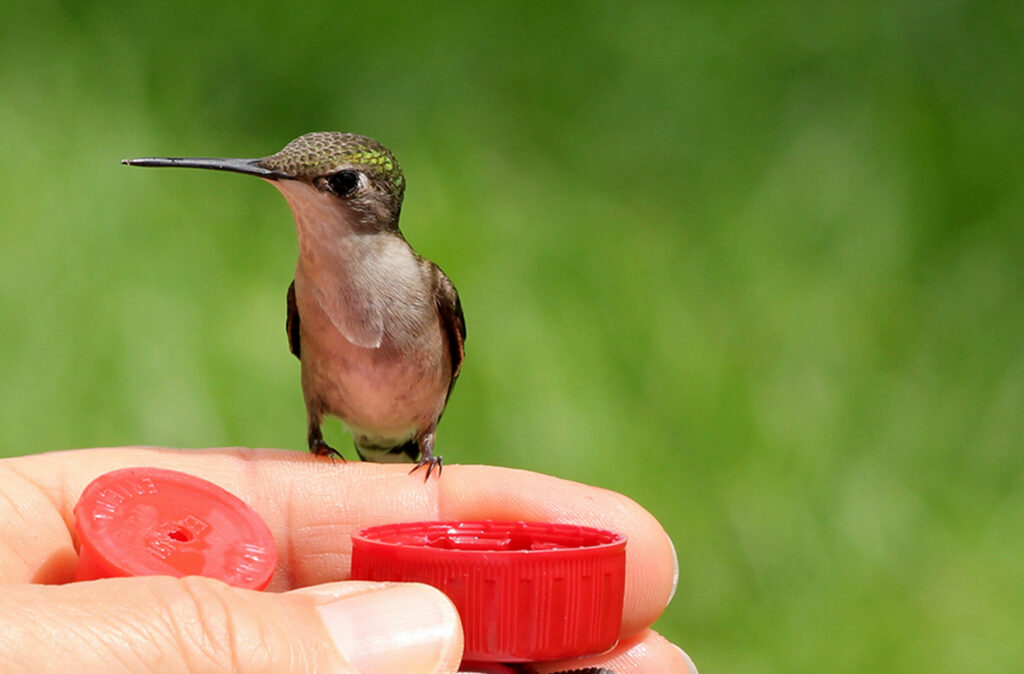
Different groups of hummingbirds can have different tolerance levels. For instance, some are more accepting of humans nearby while other groups are very shy. Many hummingbirds won’t need the Bait & Switch to try a new feeder. However, it’s still a good idea to do it. It’s interesting that male hummingbirds are usually slower to make the switch than females. Huh.
Unusually stubborn hummingbirds?
You can still easily switch your hummingbirds to a new feeder
The Modified Bait & Switch: Put the old feeder out with a verrry small amount of nectar in it – just enough to lick off the bottom or keep feed for a day, at most. Make sure that it’s just a little so it will run out pretty fast. When your hummingbirds dry up the old feeder, they’ll move to the one next to it. Just like they do with flowers.
Most likely, your hummingbirds are not genetic anomalies and will assimilate to the Bait & Switch, like it was the Borg. This modified Bait & Switch can also be helpful if you’ve got a lot of neighbors, who are also feeding hummingbirds. No one wants their hummingbirds defecting to the neighbor’s, right?? For some reason, we all want ALL of the hummingbirds.
When not switch your hummingbirds to a new feeder
In the beginning of Spring: For your hummingbirds that just arrived, put out your old feeder filled with nectar, in it’s original location. Do this until it looks like all of your hummingbirds are back and feeding regularly. Then go ahead with the Bait & Switch. Their migration is very difficult and they’ll need a few days to bulk up. When the early hummingbirds arrive, it’s usually too early for flowers or bugs. So, there’s nothing for them to eat. Your feeder is the only thing keeping them from starving.
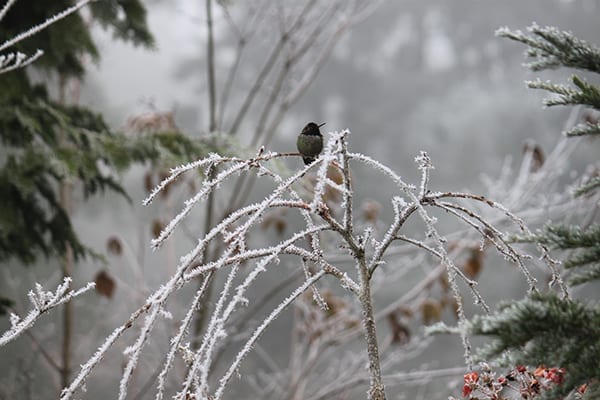
A word about late, wintry weather: If the weather is not very Spring-like, don’t make the mistake of NOT putting out a feeder! They’ll need it more than ever in cold or bad weather. Save the Bait & Switch for better weather. Check out our earlier blog about keeping hummingbird feeders warm and thawed.
Crazy, long tongues are essential
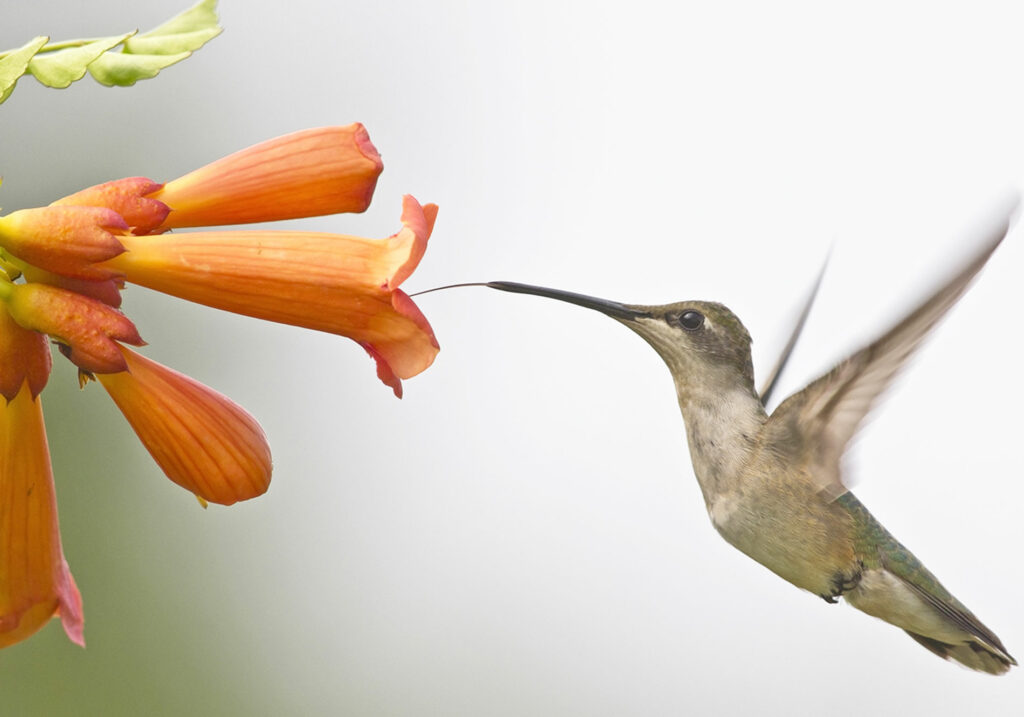
If you’re switching to one of our hummingbird feeders, the raised feeding ports allow only birds with long tongues to reach the nectar. So you may see your hummingbirds give the new feeder a quick try and go back to the old feeder. Don’t fret. They’re simply expecting the nectar to be sitting right at the port opening – just the way those blankety-blank yellow jackets like it.
The hummingbirds will quickly learn that they’ll have to use their crazy long tongues to reach the nectar, just like they do with deep, trumpet-shaped flowers.
Be patient. They always figure it out. Once they do, you can bet they’ll prefer feeding without fighting those blankety-blank yellow jackets.
Many people throw out perfectly good feeders…
Assuming that their hummingbirds don’t ‘like’ the new feeder, they throw it away. Hopefully, this sheds some light on why hummingbirds do what they do. In addition, alleviating a lot of frustration.
Unfortunately, the person who made the video, below, blamed the retailer for her hummingbirds’ perfectly normal behavior. This person isn’t alone, they just went a bit more public than most.
We love comments and feedback
We welcome your comments on this, and any other of our blogs. Unfortunately, the spammers are relentless, so bear with us. We have to sort through them to find real comments.
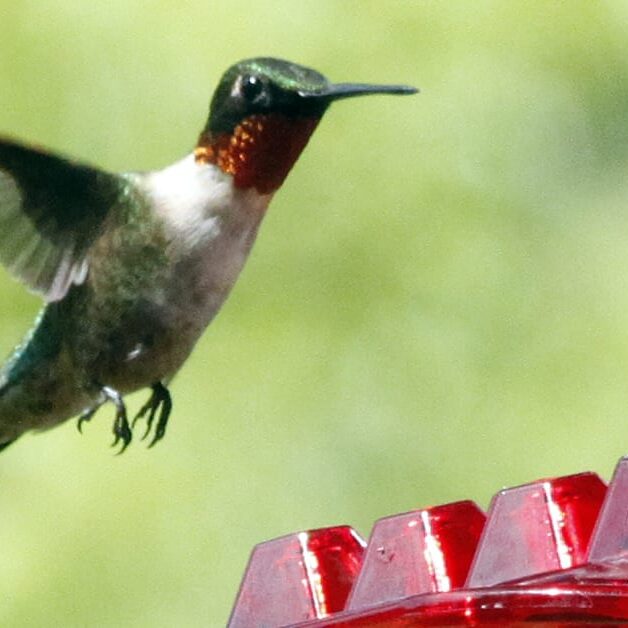

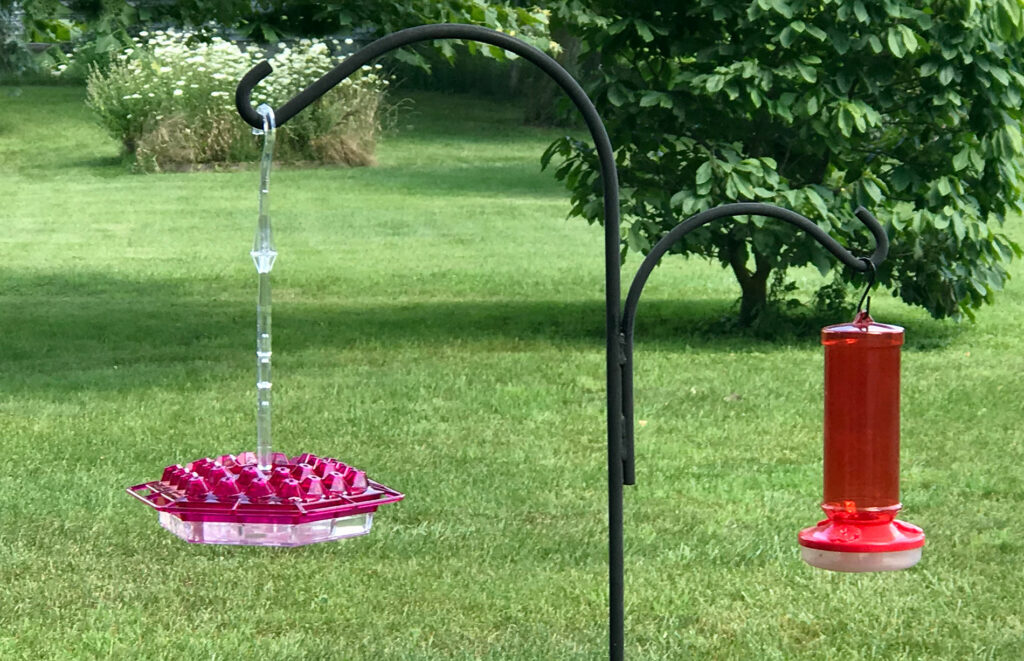
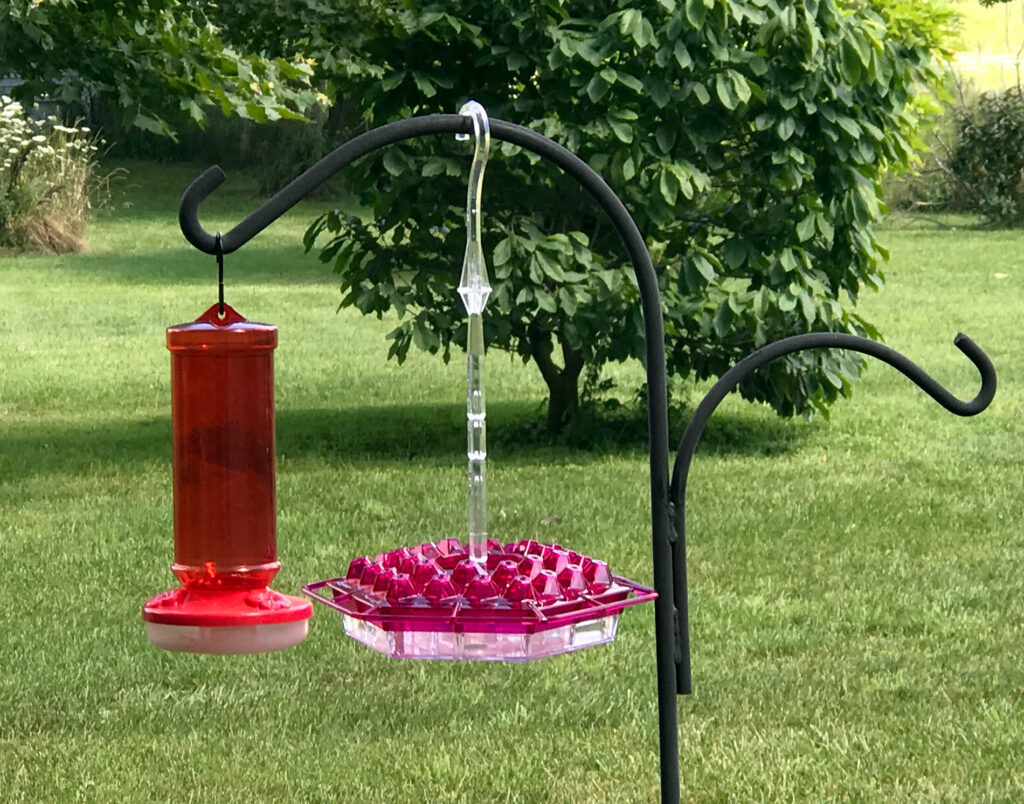
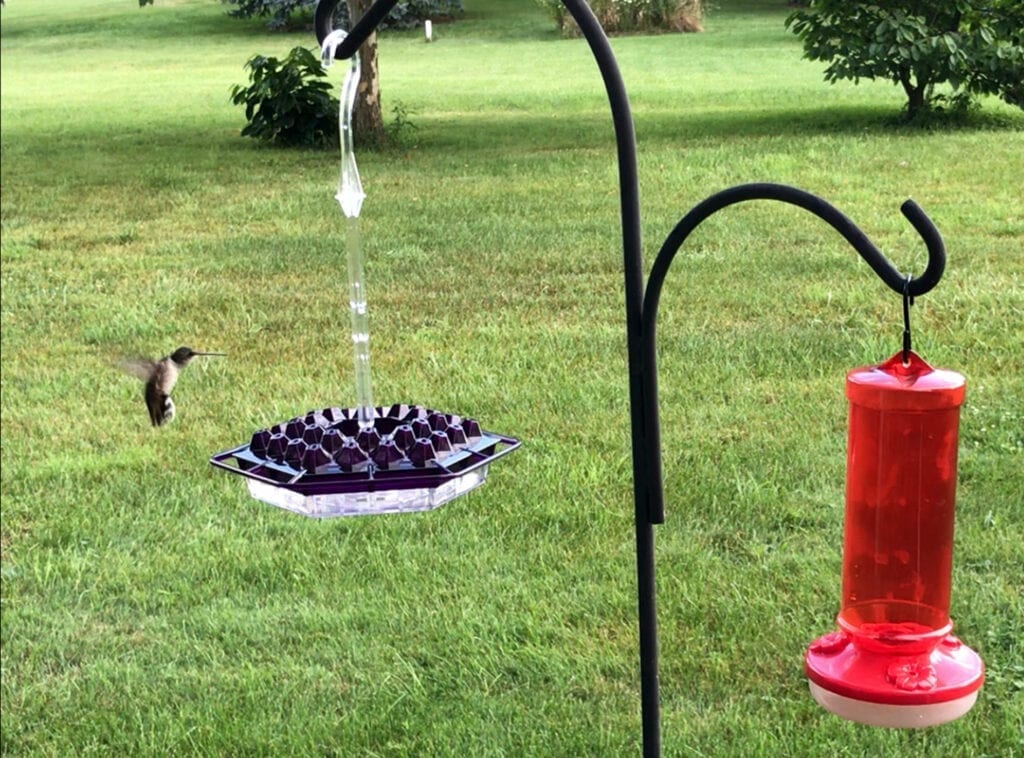
I have a lot of Hummingbirds every year. I live in The country & have been feeding Hummingbirds for quite awhile. I have 8 quart bottles out hanging on my front Porch & they drink almost 75lbs of sugar. Water Every Summer. I enjoy watching them from my living room window. 🙂
Wow! You’re making all of us, who’re lucky to get 5 hummingbirds, a bit envious.
Well I did not know this my daughter got me a new feeder and they quit coming guess I will put the other one up I had them all the time now none thank you for this article
Glad it’s of help and hopefully it gets your daughter off the hook. You’re definitely not alone. Many people have done that so we thought this blog might help.